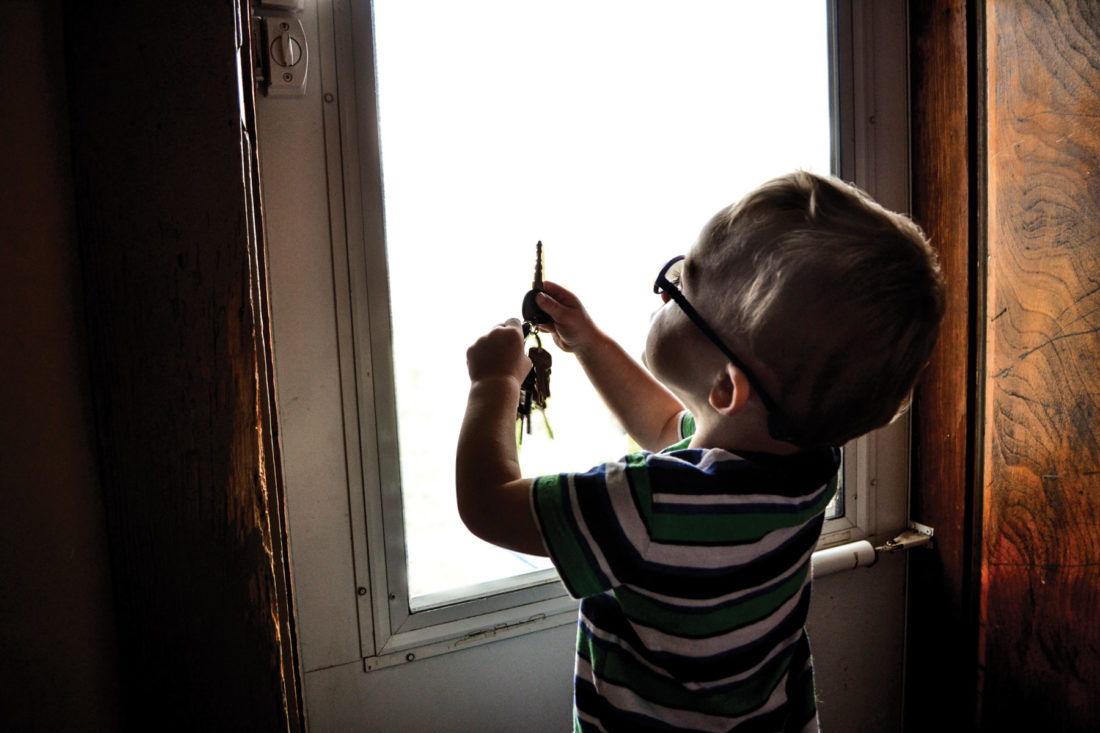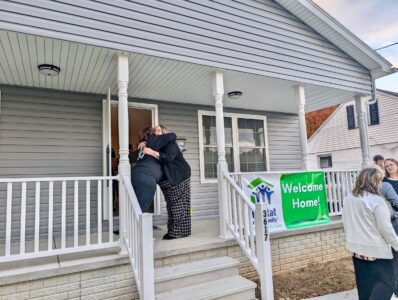Life can be a struggle for babies born to heroin users

Photo illustration by Janelle Patterson Adam, whose name has been changed to protect his adoption, looks out the front door of his home in Marietta.
MARIETTA — Violent sickness, anxiety, nausea, vomiting and abdominal pain can last up to a month in adults going through opioid and opiate withdrawal, but in babies born addicted to opioids or opiates, the developmental risks and complications resulting from heroin and prescription drug exposure in utero can affect them for the rest of their lives.
“We know the symptoms, the dysfunction of the central nervous, autonomic nervous and respiratory systems,” said Ginger O’Connor, speech-language pathologist at Ewing School in Marietta. “These babies can have difficulty breathing, tremoring and shaking spells, incessant crying that’s unable to be soothed, seizures, feeding problems, vomiting and diarrhea as their bodies detox after swimming in whatever cocktail of drugs their mothers were taking.”
Neonatal abstinence syndrome, a postnatal drug withdrawal syndrome in newborns caused by exposure to opioids in utero, sets the first four to six weeks of an infant’s life up for the strongest manifestation of the symptoms. It also affects the development of the child’s brain, often resulting in speech and social delays as well as perception issues and obsessive defiant disorder.
According to the American Academy of Pediatrics, opiates rapidly cross the placenta, with drug equilibration between the mother and the fetus and opiates have been shown to decrease brain growth and cell development.
“But our fear is that doctors still don’t know what all of the long-term effects are going to be,” said Ellen, the aunt of 2-year-old Adam, both of Marietta, whose names have been changed to protect his adoption process. “There have been so many improvements and he’s come so far but it took excruciating physical therapy, surgery and so much patience to get where we are now.”
Adam was put into Ellen’s care at 2-months-old, after his father, Ellen’s brother-in-law, passed away suddenly two years ago.
“When we first got him, he could fit in my hands, he was only three pounds and was very malnourished,” explained Ellen. “He had such trouble breathing, he couldn’t move because his muscles were atrophied from being left lying down and his eyes were pointed upward and outward due to congenital exotropia caused by the drugs causing calcification on his brain.”
Adam’s mother was first addicted to prescription opioids before becoming pregnant, a practice which she continued by hiding the pregnancy from her physician.
“We don’t know what all she took in addition to the Xanax and Adderall or if any of it wasn’t prescription,” explained Ellen. “She was very secretive and they made it impossible to meet him before my brother-in-law died. So we didn’t know how badly he was addicted to her cocktail of drugs until we got him.”
Ellen said she and her husband had to learn a whole new parenting style, different from how they had raised their 20-year-old son and are currently raising their teenager.
“He had so many hurdles to overcome that I didn’t have with my two sons,” she explained. “So crawling, walking and talking have each been little victories.”
Adam is one of the lucky ones, O’Connor said, with family willing to take him in, provide care and who are now in the process of adopting him. That stability in his life for the past two years has fostered his development in a safe and loving home, which she said is vital for children born with NAS.
“We know that when kids who are born with NAS can be placed in a loving and supportive home, those kids tend to be much better off than staying in the home were parents are still using or are living in poverty with poor nutrition, violence and emotional insecurity,” O’Connor explained. “Kids that live in an uncertain environment can develop toxic stress and that, combined with long-term exposure to various drugs, changes the brain.”
To curb the negative effects of NAS in a child, early intervention and an individualized family service plan is designed between the caregivers, children services officials and speech-language pathologists.
“We try to build confidence and competence with the families and as a team we go in and coach, because instilling that confidence in parents, or guardians, allows them to feel in control and capable of caring for the child,” she said. “But not every baby born to a mom with addiction is born with NAS, we don’t know why and we don’t know what the long-term effects of treating an addicted mother while still pregnant will do to the child either. There are so many unanswered questions.”
With the research available, specialists like O’Connor hope to help families provide a productive and supportive quality of life for children born with NAS. But success stories like Adam’s are few and far between.
“You always hope that the environment with the biological parent is the best place but I don’t see many success stories when these infants stay with their parents. These babies don’t deserve this and their parents didn’t deserve to get stuck with it,” she explained. “But at the end of the day we want what gives that baby the best shot at a good life, because it’s not going to be an easy road.”






